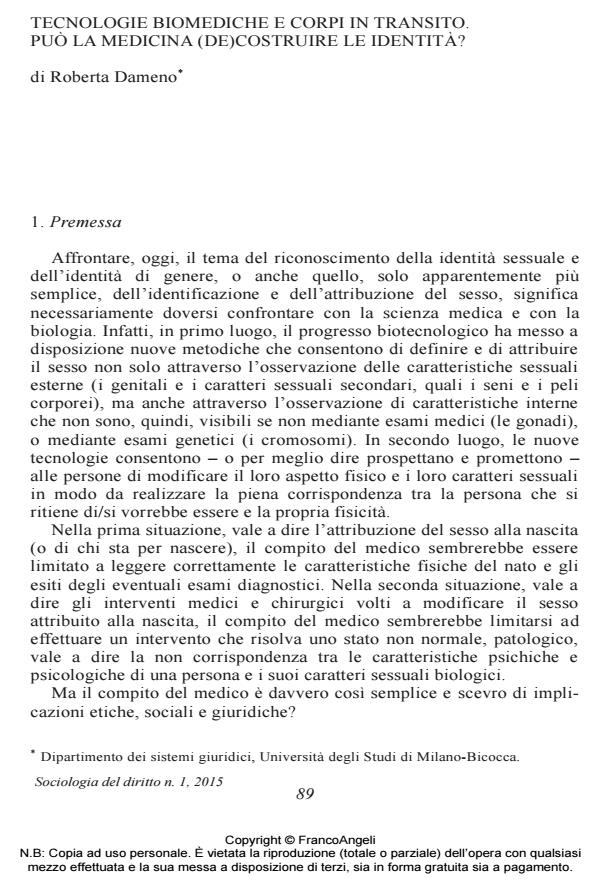Biomedical technologies and bodies in transition: can medicine de(construct) identities?
Journal title SOCIOLOGIA DEL DIRITTO
Author/s Roberta Dameno
Publishing Year 2015 Issue 2015/1
Language Italian Pages 14 P. 89-102 File size 108 KB
DOI 10.3280/SD2015-001004
DOI is like a bar code for intellectual property: to have more infomation
click here
Below, you can see the article first page
If you want to buy this article in PDF format, you can do it, following the instructions to buy download credits

FrancoAngeli is member of Publishers International Linking Association, Inc (PILA), a not-for-profit association which run the CrossRef service enabling links to and from online scholarly content.
An individual’s sexual condition and characteristics are the primary elements for defining that person’s identity and for him or him to be recognised in society. As a result of modern medicine, however, the individual’s sexual characteristics are no longer an unchangeable fact, but can be modified, so that people are free to deconstruct and reconstruct their physical belonging to one biological gender rather than the other. In this respect, today’s medicine and surgery can thus be defined as tools that aid the full achievement of individuals’ identity. Yet one cannot ignore the fact that there is also an ancillary risk of ‘normalisation’, brought about by medical and surgical practice, of all those people whose biological gender is not well defined and definable and of all those people who do not want to identify with just one sex and just one gender.
Keywords: Medicalisation - Intersexuality - Transsexuality - Human rights - Identity - Gender
Roberta Dameno, Tecnologie biomediche e corpi in transito. Può la medicina (de)costruire le identità? in "SOCIOLOGIA DEL DIRITTO " 1/2015, pp 89-102, DOI: 10.3280/SD2015-001004